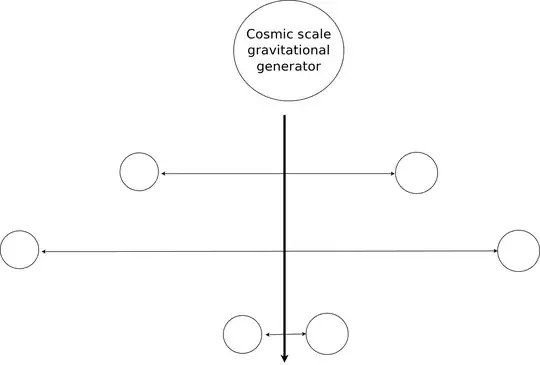gravitational waves are strictly transversal (in the linear regime at least), also their amplitudes are tiny even for cosmic scale events like supernovas or binary black holes (at least far away, maybe we should ask some physicists located a bit closer to the center of the galaxy), but lets put all those facts aside for a second and consider a gravitational source big enough to generate gravitational waves with amplitudes of the order of the galaxy. For instance consider a planar wave like in my mediocre drawing:
$$ h_{\alpha \beta} e^{i (k_{y} y - \omega t)} $$
where
$$ h_{\alpha \beta} \approx 1 $$
so the perturbation is in the nonlinear regime

i draw two far away objects in three different time slices (this is why they are repeated 3 times), the topmost is the objects without the gravitational wave, the one in the middle represents the objects in the crest of the gravitational wave, and the one in the bottom represents the objects in the valley of the wave.
So, my point is that people would only have to travel an arbitrarily small distance when the wave is on the valley (assuming circular polarization) even if the "normal" distance (i.e: $h_{\mu \nu} = 0$) is several light-years away
Besides being slightly impractical to set up such a mammoth gravitational source, this kind of warp drive is valid from a physical standpoint? Are there any physical limits to gravitational wave amplitudes in such nonlinear regime?